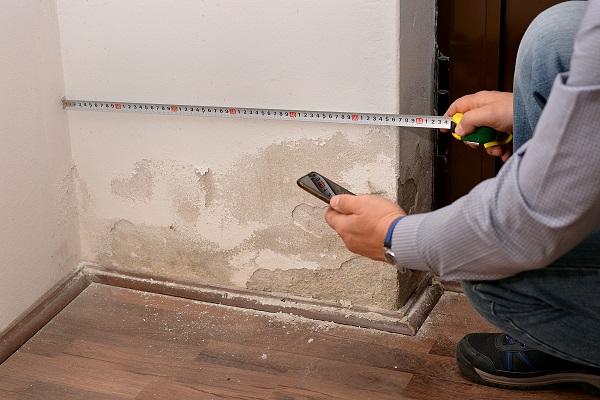Do's & Don'ts of Water Restoration.
Do's & Don'ts of Water Restoration.
Blog Article
What're your insights and beliefs about Fire And Water Damage Prevention?

Water gives life, however water breach on some components where it's not intended to be can lead to damages and aggravation. If the water permeates into your framework, it can peel off away the surface area and deteriorate the material's foundation. Mold and mildew also flourish in a moist setting, which can be harmful for your and your household's wellness. Furthermore, homes with water damages odor musty as well as old.
Water can come from numerous sources like tropical storms, floods, burst pipes, leaks, as well as sewage system problems. It's much better to have a working knowledge of security preventative measures if you have water damage. Below are a few standards on how to handle water damage.
Do Prioritize House Insurance Policy Insurance Coverage
Seasonal water damage can come from floodings, seasonal rains, and wind. There is also an occurrence of an abrupt flooding, whether it came from a defective pipe that suddenly bursts into your residence. To safeguard your residence, get house insurance coverage that covers both disasters such as natural catastrophes, and also emergency situations like broken plumbing.
Don't Fail To Remember to Turn Off Utilities
When calamity strikes and also you remain in a flood-prone area, shut off the major electric circuit. Turning off the power prevents
electrical shocks when water comes in as water acts as a conductor. Don't neglect to turn off the main water line valve as a way to avoid more damages.
If the floodwaters are getting high, maintain your furnishings stable as they can move around and also cause added damages.
Do Remain Proactive as well as Heed Weather Condition Alerts
If you live in a location plagued by floods, stay aggressive and ready at all times. Pay attention to the information and also discharge cautions if you live near a body of water like a lake, creek, or river .
Don't Overlook the Roofing System
Your contractor must take care of the malfunctioning seamless gutters or any type of other indications of damages or weakening. An inspection will certainly avoid water from flowing down your wall surfaces and soaking your ceiling.
Do Focus On Small Leaks
There are red flags that can draw your interest and also indicate to you some damaged pipes in your home. Indications of red flags in your pipes include bubbling paint, peeling off wallpaper, water touches, water spots, or trickling sounds behind the wall surfaces. Repair work and examine your plumbing fixed before it results in enormous damages to your residence, funds, and an individual problem.
Do Not Panic in Case of a Burst Pipeline
Keeping your clearheadedness is important in a time of crisis. Due to the fact that it will stifle you from acting quickly, panicking will only compound the problem. Panic will also provide you additional anxiety. When it comes to water damage, timing is vital. The longer you wait, the even more damage you can anticipate and also the most awful the outcomes can be. If a pipe bursts in your residence, quickly shut off your primary water valve to remove the source and stop more damage. Unplug all electric outlets in the area or shut off the circuit breaker for that part of the house. Call a reputable water damages reconstruction expert for help.
Water provides life, yet water invasion on some components where it's not intended to be can result in damages as well as inconvenience. In enhancement, residences with water damage odor old and moldy.
Seasonal water damages can come from floods, seasonal rains, as well as wind. Signs of red flags in your pipes include gurgling paint, peeling wallpaper, water streaks, water discolorations, or trickling sounds behind the walls. If a pipe bursts in your residence, right away shut off your main water shutoff to cut off the source and avoid even more damages.
Some Do's & Don't When Dealing with a Water Damage
DO:
Make sure the water source has been eliminated. Contact a plumber if needed. Turn off circuit breakers supplying electricity to wet areas and unplug any electronics that are on wet carpet or surfaces Remove small furniture items Remove as much excess water as possible by mopping or blotting; Use WHITE towels to blot wet carpeting Wipe water from wooden furniture after removing anything on it Remove and prop up wet upholstery cushions for even drying (check for any bleeding) Pin up curtains or furniture skirts if needed Place aluminum foil, saucers or wood blocks between furniture legs and wet carpet Turn on air conditioning for maximum drying in winter and open windows in the summer Open any drawers and cabinets affected for complete drying but do not force them open Remove any valuable art objects or paintings to a safe, dry place Open any suitcases or luggage that may have been affected to dry, preferably in sunlight Hang any fur or leather goods to dry at room temperature Punch small holes in sagging ceilings to relieve trapped water (don't forget to place pans beneath!); however, if the ceiling is sagging extremely low, stay out of the room and we'll take care of it DO NOT:
Leave wet fabrics in place; dry them as soon as possible Leave books, magazines or any other colored items on wet carpets or floor Use your household vacuum to remove water Use TV's or other electronics/appliances while standing on wet carpets or floors; especially not on wet concrete floors Turn on ceiling fixtures if the ceiling is wet Turn your heat up, unless instructed otherwise

As a reader on How To Prevent Fire And Water From Ruining Your Holiday Season, I think sharing that editorial was smart. Feel free to take the opportunity to promote this page if you liked it. I am grateful for your time. Kindly stop by our site back soon.
Report this page